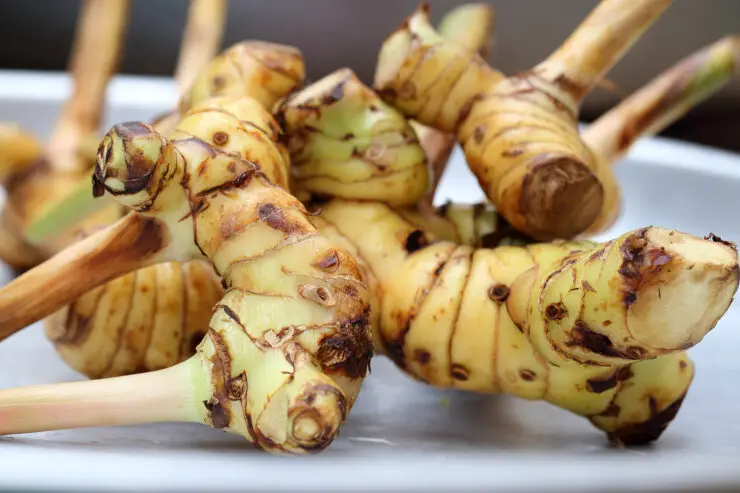As an Amazon Associate I earn from qualifying purchases. Please read the disclaimer for more info.
Galangal is a rare but uncommon spice used in Asian, Vietnamese, Indonesian, and Thai recipes. Since the plant is indigenous to Southeast Asia, you might need help finding a substitutes for galangal in your local grocery to prepare a cuisine that calls for it.
Galangal can also be purchased as a dry powder, though you might not find it as flavorful as the fresh. Therefore, choosing fresh spices from the market that are remarkably similar to Galangal or choosing new alternatives, such as ginger, lemongrass, turmeric, or fingerroot that is readily available in the kitchen, should be your best selection to enhance flavor.
What is Galangal?
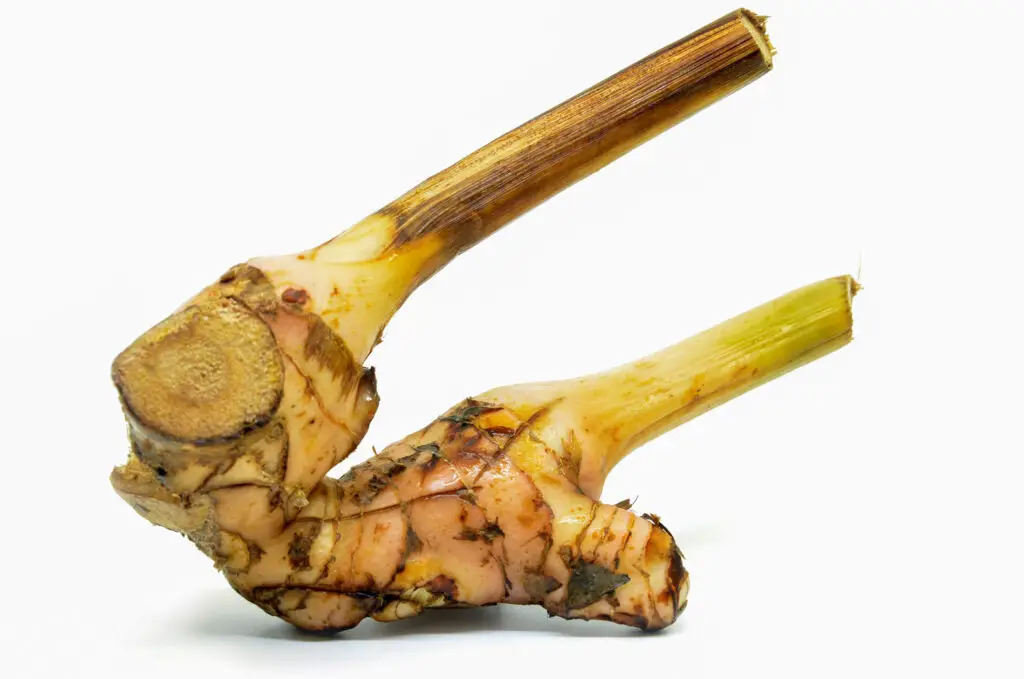
Galangal has a robust and earthy flavor comparable to ginger but with a tinge of lemon, earning it the nickname “the citrus cousin of ginger.” The spice is used in many Asian and Indian dishes to add a spicy, peppery flavor with a tinge of pine.
Peeling the skin off fresh galangal before chopping or grating the root is essential. Also, it’s crucial to begin with a modest amount of galangal when using it, as when used in excess, this firm root can easily overpower other flavors.
Which Recipes Need Galangal?
Here are three galangal types used in various regions of international cuisine before we get to the recipes.
Lesser:
Originating in China, it has a much stronger spicy and pungent flavor than greater galangal;
Light:
Indian-born light galangal is quite similar to ginger.
Greater:
It is a subtler, more subdued variant of galangal that is endemic to Indonesia;
Lesser galangal, the most flavorful and aromatic of the three types, is the one you’ll encounter most frequently. Dried and fresh galangal are both delicious in Thai soups, sauces, Indonesian meat dishes, curries, stir-fries, Vietnamese stews, and seafood marinades.
Benefits of Galangal:
Here are a few benefits of this spice in your meal:
● Galangal is an organic antimicrobial that boosts immune function and combats HIV
● Ensures better Cardiac Health
● Have Anti-inflammatory and antioxidant properties
● Combats Respiratory Conditions
● Might Aid in Lowering Blood Cholesterol Levels
● Eliminates motion, morning, and sea sickness
● Supports Cognitive Function and improves skin condition.
How to choose Galangal Substitute?
Purchasing raw or powdered galangal can sometimes be difficult if your local grocery shop does not offer an Asian or significant global spice section.
Although it looks exceptionally similar to ginger, it has a distinct flavor profile; yet, fresh ginger may be a suitable replacement in need.
Suppose you want to get an authentic taste without utilizing Galangal root. In that case, you must replace this specific flavor according to the citrus overtones in galangal.
When combined with ginger, the widely used alternative lemongrass creates a flavor profile that closely resembles the original. If you don’t have any lemongrass, you can still get the desired citrus notes by adding some kaffir lime leaves or lemon juice.
Related: 6 Best Substitutes for Swiss Chard
Top 5 Substitutes for Galangal:
Here are the substitutes that may help you in the kitchen when you cannot access Galangal but are craving some Asian dishes.
1. Lemongrass:
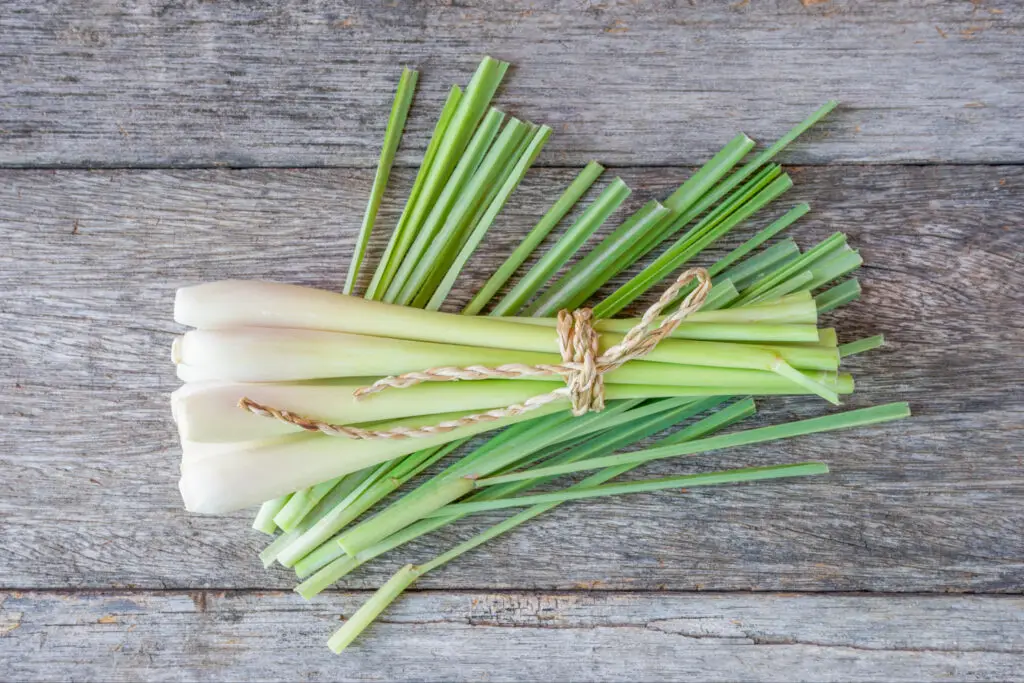
In most of the exotic Asian food cultures, you will find the use of Lemongrass. People use it in soups, stews, and tea as a flavor enhancer. There are a few different types of Lemongrass available in this part of the world, and each can be treated as a substitute for galangal.
Origin:
Sri Lanka, India, Thailand & Burma.
Color:
Lime Green
Taste:
Like the Lemongrass flavor and lime provides that zest in the dish, much like using the galangal, the mildness of the flavor means you can use it in significant amounts to bring the best out of your dish.
2. Ginger:
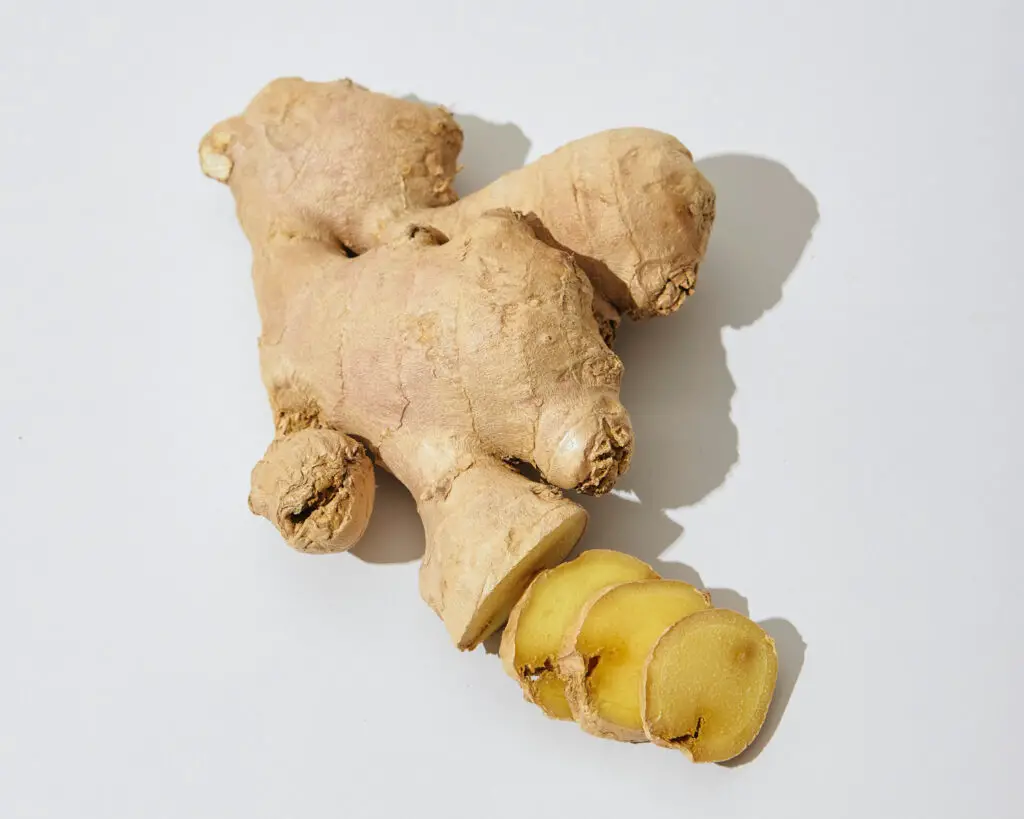
The most common substitute for galangal is its cousin from the Zingiberaceae family, Ginger. Believed to originate from the South East parts of Asia, Ginger is a popular cooking item worldwide. Although it packs a robust smell like galangal, it also gives a mild, sweet flavor at the same time.
From seafood soups to marinated meats, ginger can be used in many types of food in place of galangal. You can mince it or grate it to ooze out the flavor. Whichever way you use it, the result will be enjoyable.
Furthermore, if you want to add zest to your food, you can mix one-fourth or half a tablespoon of lime juice in your recipe. Because ginger is much spicier, make sure to use less ginger in your food than galangal.
Origin:
South-East parts of Asia
Color:
Yellow
Taste:
Mildly Sweet
3. Fingerroot:
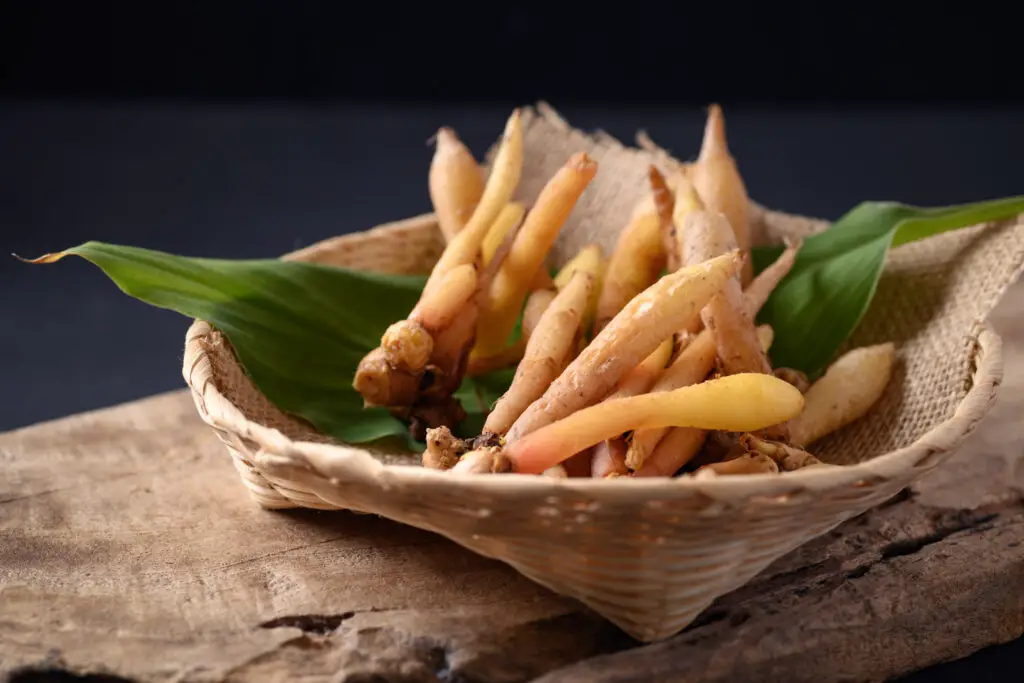
Another suitable alternative to the galangal is the finger root. With a finger-shaped appearance, these orange-colored finger roots are very close to ginger when it comes to counting as a substitute for galangal. Placed in a different botanical family than ginger and galangal, finger roots have a milder aroma and taste.
It is commonly used in Thai Cuisine as an ingredient in Seafood Dishes. Its primary purpose is to balance out the fishy flavor in seafood dishes. It’s very similar to galangal in terms of spiciness, so be sure to use finger roots in an equal ratio.
Origin:
Thailand
Color:
Orange
Taste:
Spicy like Galangal.
4. Turmeric:
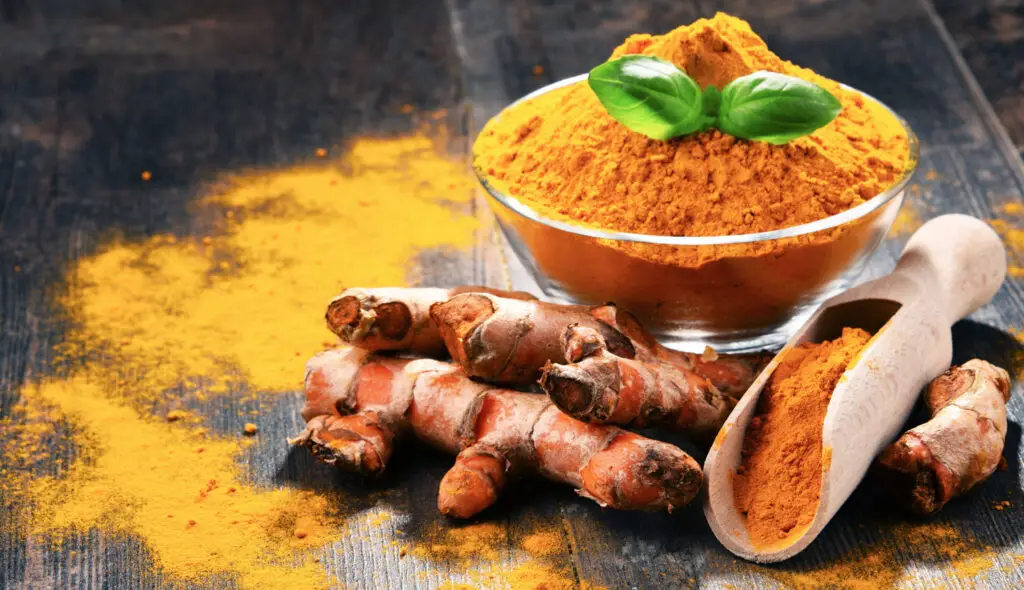
Mostly used as a Natural Tint for food, Turmeric is another mentionable substitute for galangal. It is commonly found in Southeast Asia and can enhance its appearance in various dishes.
Not that similar to galangal in terms of taste, but turmeric’s sharp, bitter and musky taste of turmeric can reduce the unpleasant fishy or meaty smell. So if you are planning on cooking stews or traditional curries, you can add turmeric to enhance the flavor.
Origin:
South East Asia
Color:
Deep Yellow
Taste:
Sharp, bitter, and musky.
5. Horseradish:
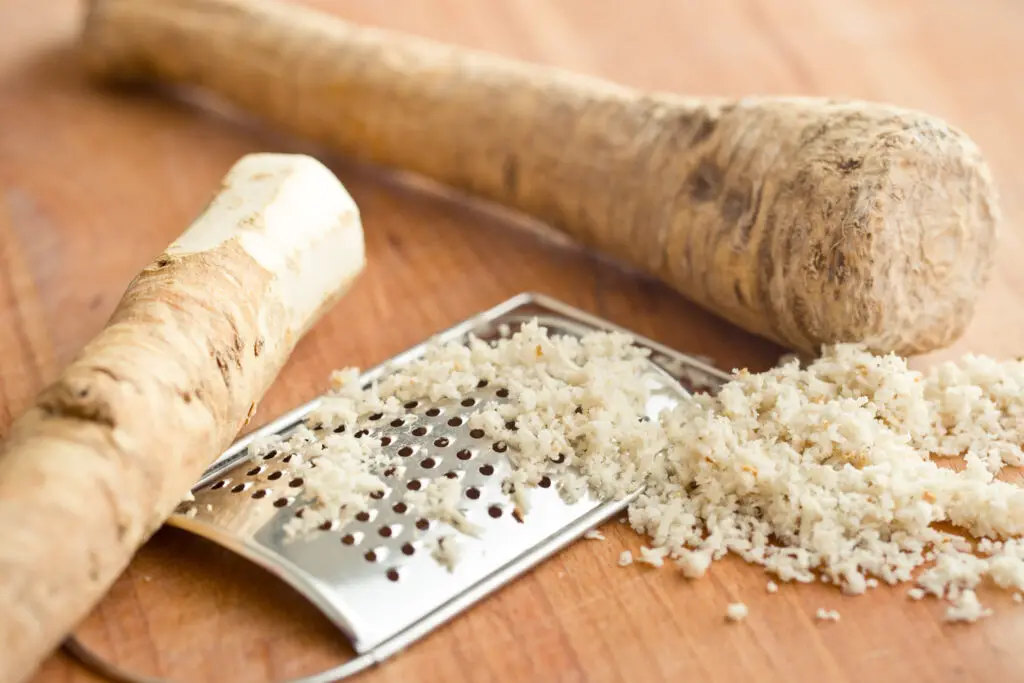
Horseradish is rare but certainly a worthy substitute for galangal. People use horseradish by grating or mixing them with other sauces to make horseradish sauce.
It goes very well with both fish and meat dishes. People also try horseradish soup to fulfill their cravings. Remember to use the horseradish in a balanced amount.
Origin:
Eastern Ukraine and Southern Russia
Color:
Pale, Yellow, and green shaded
Taste:
Strong and Spicy.
Related
If you enjoyed reading about finding substitutes for galangal, you may be interested in these articles:
- 7 Burrata Cheese Substitutes
- Pomelo vs Grapefruit – What’s the Difference?
- 9 Creative Substitutes for Asparagus
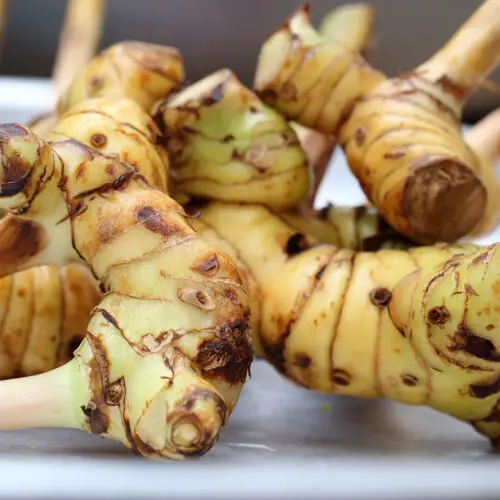
5 Best Substitutes for Galangal
Ingredients
- Lemongrass
- Ginger
- Fingerroot
- Turmeric
- Horseradish
Instructions
- Decide on the type of substitute for galangal you need based on texture and flavor.
- Pick the best fit from the above list of substitutes.
- Add to the recipe the proportions required to match the flavor and texture of the galangal.

